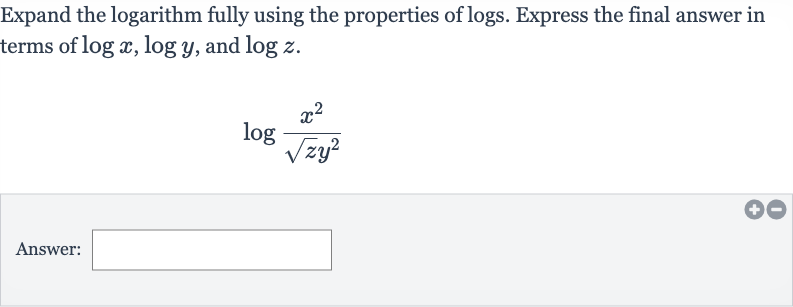Full solution
Q. Expand the logarithm fully using the properties of logs. Express the final answer in terms of , and .Answer:
- Apply Quotient Rule: Apply the quotient rule of logarithms to the expression . Quotient rule of logarithms:
- Apply Product Rule: Apply the product rule of logarithms to the denominator part of the expression .Product rule of logarithms:
- Apply Power Rule: Apply the power rule of logarithms to the expressions , , and .
Power rule of logarithms: - Substitute Results: Substitute the results from Step into the expression from Step .
- Distribute and Combine: Distribute the negative sign and combine the logarithmic terms involving .
- Simplify Expression: Simplify the expression by combining the coefficients for .
- Write Final Form: Write the final expanded form of the logarithm.The final expanded form is .

